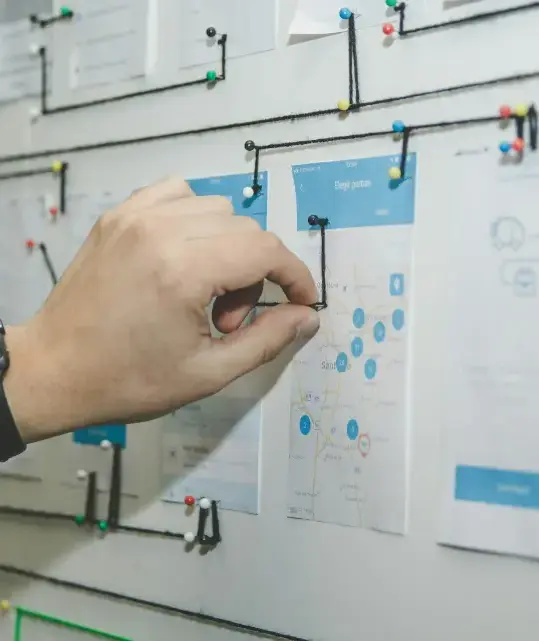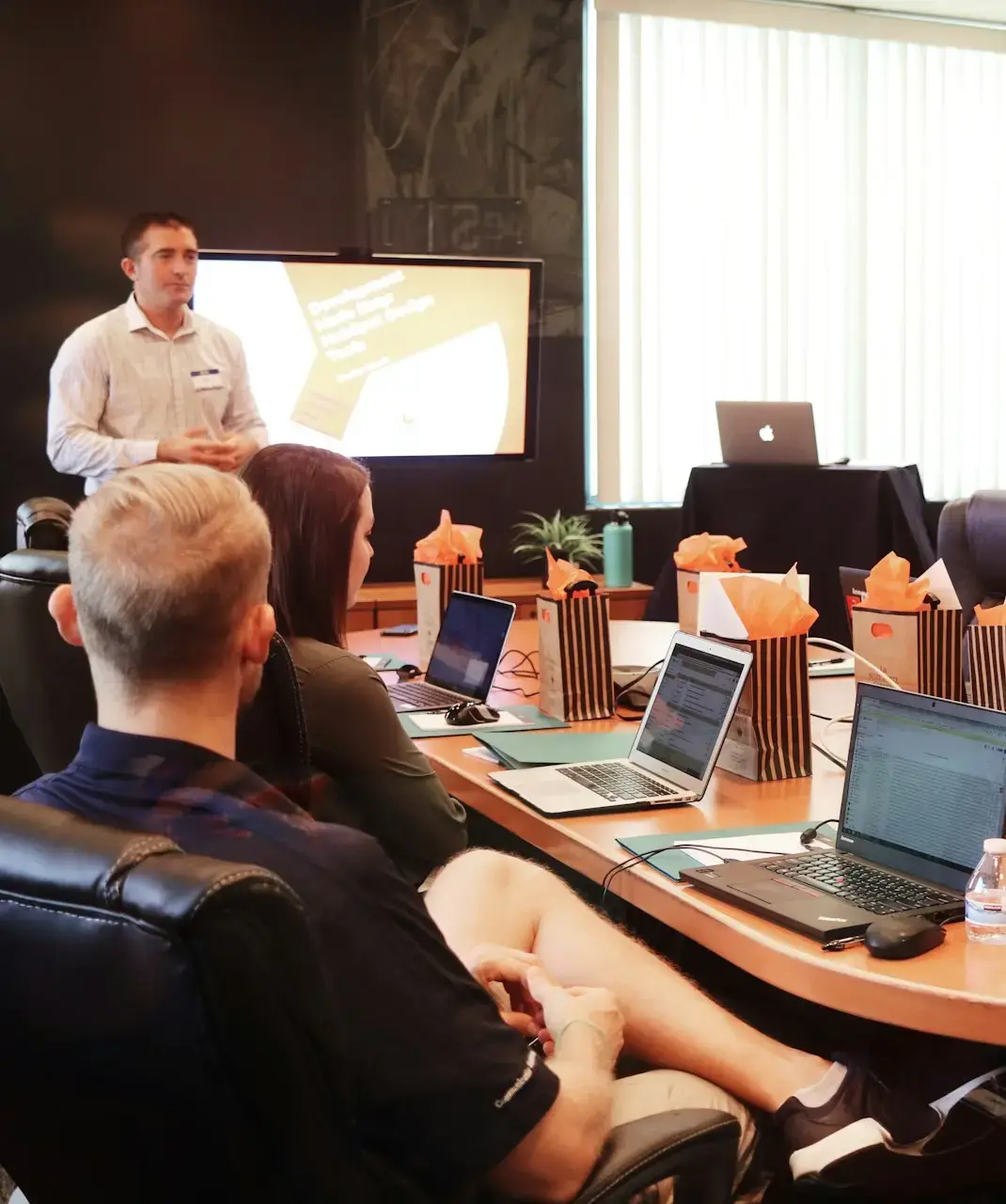ERP Integration Steps
Integrating an ERP system involves connecting it with existing business applications to enable seamless data flow and process automation. This process requires careful planning, identifying integration points, selecting the right tools or middleware, configuring data mapping, thorough testing, and ongoing support to ensure reliable and efficient operations across all connected systems.
Planning and Preparation
When we embark on an ERP integration project, our first priority is to work closely with our client to clearly define their integration objectives. We start by understanding which systems need to be connected, what data needs to be shared between them, and what business processes will be affected by the integration. This collaborative approach ensures that the integration project is aligned with the client’s overall IT strategy.
To set the project up for success, we assemble a dedicated project team that includes representatives from both the ERP team and the teams responsible for the systems being integrated. By involving key stakeholders from different areas, we make sure that every system's unique requirements and data structures are taken into account. This cross-functional team plays a vital role in driving the project forward, facilitating communication, and ensuring that the integrated solution will be embraced across the organization.
A thorough analysis of the client’s existing systems and data flows is another essential part of our preparation phase. We take the time to map out current data exchange processes, identify any data silos or inconsistencies, and highlight areas where integration can deliver the most value. This diagnostic work not only helps us set realistic expectations but also allows us to design an integration solution that truly addresses the client’s data challenges.
Once we have a clear understanding of the objectives, team structure, and current state, we move on to comprehensive budget planning. We work transparently with our client to outline all anticipated costs, including integration software, middleware, consulting services, and training. By providing a detailed and realistic budget, we help our clients avoid surprises down the line and ensure that the necessary resources are allocated to every stage of the integration project.
In summary, our planning and preparation phase for ERP integration is all about building a strong foundation for connecting the ERP system with other key business applications. By clarifying integration goals, assembling the right team, thoroughly analyzing current data flows, and planning the budget in detail, we set the stage for a smooth and successful project that delivers lasting value to our clients.

Requirements Analysis
Following the planning and preparation phase, we move into a detailed requirements analysis specifically focused on the integration needs. We concentrate on gathering the specific data and process requirements for connecting the ERP system with other key applications within our client's organization. This involves identifying the critical data points that need to be shared, the frequency of data exchange, and the business rules that govern the integration.
We conduct in-depth interviews and workshops with key stakeholders from both the ERP team and the teams responsible for the systems being integrated. This collaborative approach ensures that we capture a comprehensive view of the integration requirements from all angles, considering the unique data structures and business processes of each system.
A crucial part of this phase involves mapping out the existing data flows between the systems that will be integrated. We work closely with the client's teams to document how data is currently exchanged, identifying any data silos, inconsistencies, or manual processes that can be automated through integration. This process mapping provides a valuable foundation for designing an integration solution that streamlines data flow and improves data accuracy.
As we gather integration requirements, we also prioritize them based on their criticality and feasibility. We work with the client to determine which integrations are essential for achieving their business goals and which ones can be addressed in later phases. This prioritization process ensures that we focus on delivering the most value to the client in the shortest amount of time.
By taking a thorough and collaborative approach to integration requirements analysis, we ensure that the integration solution is tailored to meet the unique needs of our client's organization. This targeted approach not only increases the likelihood of a successful integration but also maximizes the value that the client receives from their integrated systems.
Design and Configuration

With a solid understanding of the client's integration requirements, we move into the design and configuration phase, where we translate those needs into a functional integrated solution. This phase begins with planning the integration architecture, which involves defining the overall structure of the integrated systems, including the integration points, data mappings, and communication protocols. We work closely with the client's IT team to ensure that the integration architecture aligns with their existing infrastructure, security requirements, and data governance policies.
A critical aspect of the integration design is developing a comprehensive data mapping and transformation strategy. We analyze the data structures of the ERP system and the other systems being integrated to determine the best approach for mapping data fields, transforming data values, and ensuring data consistency across all systems. This process often involves data cleansing, standardization, and validation to ensure that the integrated data is accurate and reliable.
Once the integration architecture and data mapping strategy are in place, we begin the configuration process. This involves configuring the integration middleware or APIs to facilitate data exchange between the systems. We work closely with the client's subject matter experts to configure the integration rules, workflows, and error handling procedures to meet their specific business needs.
Throughout the design and configuration phase, we emphasize collaboration and communication. We regularly update the client on our progress, solicit their feedback, and make adjustments as needed. This iterative approach ensures that the final integrated solution is a perfect fit for their organization and delivers seamless data flow across all systems.
Testing
Rigorous testing is a critical phase in our ERP integration methodology. It ensures that the integrated systems function as expected and meet the client's integration requirements before go-live. Our testing process is structured and comprehensive, encompassing three key stages: unit testing, integration testing, and user acceptance testing (UAT).
First, we conduct unit testing on the integration components themselves. This involves verifying that each integration point, data mapping, and transformation rule works as designed. Our testing team uses a combination of automated and manual testing techniques to identify and resolve any defects or issues within the integration logic.
Next, we perform integration testing to ensure that the ERP system and the other integrated systems work seamlessly together. This involves testing the data flow and system interactions between the systems to verify that information is shared accurately, efficiently, and in the correct format. We also test error handling and exception management to ensure that the integrated solution is robust and resilient.
Finally, we involve the client's end-users in user acceptance testing (UAT). This is a critical step in the testing process, as it allows users to validate that the integrated systems meet their business needs and that the integration process is user-friendly. During UAT, users perform real-world tasks and scenarios that involve data flowing between the systems to identify any issues or areas for improvement. We work closely with the client to address any feedback and make necessary adjustments to the integration.
By conducting thorough testing at each stage, we ensure that the integrated systems are stable, reliable, and ready for use. This rigorous testing process minimizes the risk of issues during go-live and helps ensure a smooth transition to the integrated environment.
Training
Effective training is paramount to ensuring that our clients can fully leverage the capabilities of their integrated ERP system and other connected applications. We believe that a well-trained user base is essential for maximizing the return on investment and achieving the desired business outcomes from the integration. Our training approach is comprehensive and tailored to meet the specific needs of each client and their integrated environment.
First, we develop comprehensive training materials that are tailored to different user roles and the specific integration points they will be using. These materials include user guides, tutorials, and hands-on exercises that cover all aspects of the integrated workflows and data flows. We work closely with the client to ensure that the training materials are relevant, easy to understand, and aligned with their integrated business processes.
Next, we conduct training sessions for all users, providing them with the knowledge and skills they need to use the integrated systems effectively. Our training sessions are interactive and engaging, with a focus on hands-on learning that simulates real-world scenarios involving data exchange between the systems. We use a variety of training methods, including classroom instruction, online tutorials, and one-on-one coaching, to cater to different learning styles.
Finally, we offer ongoing support and resources to help users troubleshoot issues and maximize their use of the integrated systems. Our support team is available to answer questions, provide guidance on integration-related tasks, and resolve any technical issues that may arise with the integrated environment. We also provide access to a comprehensive knowledge base and online resources that users can access at any time to learn more about the integration and its capabilities.
By providing comprehensive training and ongoing support focused on the integration, we empower our clients to take ownership of their integrated systems and achieve their business goals. We believe that training is an investment in the future, and we are committed to providing our clients with the resources they need to succeed in their integrated environment.

Deployment
Deployment is a pivotal stage in our ERP integration projects, where all the planning, configuration, and testing come together as the integrated systems are introduced to the organization. We approach deployment with a focus on minimizing disruption to existing workflows and ensuring a smooth transition to the integrated environment for our clients.
Our deployment process often begins with a phased rollout of the integration. We typically start by integrating the ERP system with a pilot group of systems or within a single department. This approach allows us to closely monitor the integration's performance in a controlled environment, gather feedback from users on the integrated workflows, and quickly address any unforeseen issues related to data flow or system interactions. The insights gained from the pilot phase help us fine-tune the integration and processes before expanding the integration to other systems and departments.
Once the pilot phase is successfully completed and any necessary adjustments have been made to the integration, we proceed to the full go-live of the integrated environment. At this stage, the ERP system is integrated with all the designated systems across the entire organization. Our team works closely with the client to coordinate the transition, provide on-site support, and ensure that all users are comfortable with the integrated workflows and data access.
After go-live, we continue to monitor the integration's performance closely. We track key metrics related to data synchronization, data accuracy, and system response times. We respond promptly to any issues that arise with the integration, and provide ongoing support to users to ensure they can effectively utilize the integrated systems. This proactive approach helps us quickly resolve any challenges and ensures that the integrated systems deliver the expected benefits from day one. By managing the integration deployment in a structured and supportive way, we help our clients achieve a successful integration launch and a strong foundation for improved efficiency and data-driven decision-making.
Post-Implementation Support

Our commitment to our clients extends far beyond the initial deployment of the integrated ERP system. We understand that post-integration support is crucial for ensuring long-term success and maximizing the value of the integration investment. Our comprehensive post-integration support program is designed to provide ongoing assistance, gather feedback specifically related to the integration, and continuously improve the integrated environment to meet evolving business needs.
First and foremost, we provide ongoing technical support and assistance to users related to the integration points and data flows. Our support team is available to answer questions about the integration, troubleshoot issues with data synchronization, and provide guidance on how to use the integrated systems effectively. We offer a variety of support channels, including phone, email, and online chat, to ensure that users can get the help they need when they need it for integration-related issues.
We also actively gather feedback from users to identify areas for integration improvement. We conduct regular surveys, hold focus groups, and solicit feedback through our support channels, specifically asking about the performance and usability of the integrated workflows. This feedback is invaluable in helping us understand how the integration is being used and where we can make enhancements to better meet the needs of our clients and improve the integrated experience.
In addition to providing support and gathering feedback, we also monitor the integration for performance and stability. We track key metrics related to data latency, error rates, and system uptime to ensure that the integration is running smoothly and efficiently. We apply updates and patches to the integration components on a regular basis to address any performance issues or security vulnerabilities.
Finally, we continuously evaluate and optimize the integration to meet evolving business needs. We work closely with our clients to identify new opportunities to leverage the integration for improved efficiency, automation, and data-driven decision-making. By providing ongoing support, gathering feedback, monitoring performance, and continuously improving the integration, we help our clients maximize the value of their integration investment and achieve long-term success with their integrated systems.